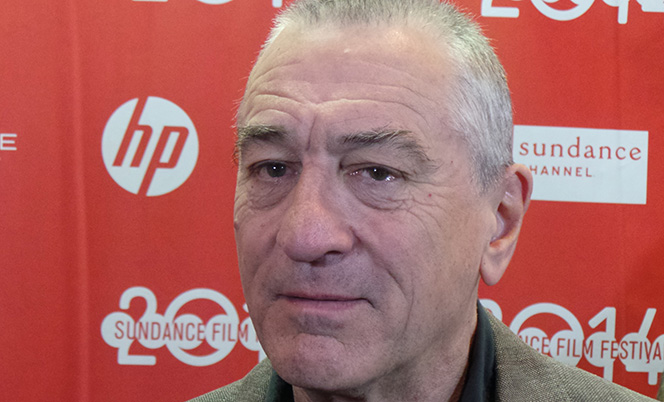
- Awards
Robert De Niro in Sundance
“My intention wasn’t to make a TV movie, I just wanted to make something for my kids, my family, so they could learn what a great artist their grandfather was.
Then HBO picked it up and financed it, so here we are”. De Niro is not new to Sundance: “I have been here a few times before, and I love this festival,” he said. “In fact, I love being at festivals, the people participate a lot and there’s always a nice and friendly atmosphere”. Airing in June 2014 on HBO, the 40 minute documentary tells the story of De Niro Sr., born in 1922. After meeting in Hofmann school in NY with his future wife Virginia – a painter as well – De Niro Sr. joined the Abstract Expressionist movement. With Jackson Pollock, Willem de Kooning and Franz Kline among others, these artists ended up spearheading the post-WWII art scene, but De Niro’s work was quickly obscured by the powerful Pop Art movement lead by Andy Warhol. Struggling with his latent homosexuality, De Niro Sr. separated from his wife and moved to Paris, where he found himself in a difficult situation, often helped by his son Robert, already a successful actor. De Niro Sr. went on painting tirelessly until his death in 1993 from prostate cancer.
“One of the things I regret is not having being able to take care of him more promptly,” said a dewy-eyed De Niro, who flew to Park City with his producing partner Jane Rosenthal and the film’s two directors, Perri Pelts and Geeta Gandbhir.
“I also was diagnosed with prostate cancer a few years ago but I took care of it immediately and was able to defeat it. Today I’m fine, and I wish my father could have lived and painted a little bit longer”.
De Niro attended the Q&A after the screening at the Yarrow Hotel in Park City. Later he spent more than an hour speaking with guests at the opening of an art exhibit in Park City dedicated to his father, where over 20 water colors by Robert De Niro Sr. will be on sale throughout the festival. “To my eyes my father was a great artist,” says De Niro while sipping on an ice-cold Martini, “He was uncompromising. He would send gallery owners to hell if they exhibited the work of artists he disliked”.
Silvia Bizio [gallery:3327]